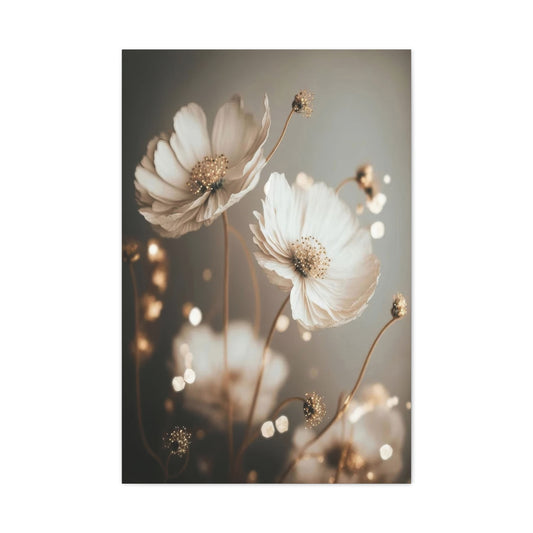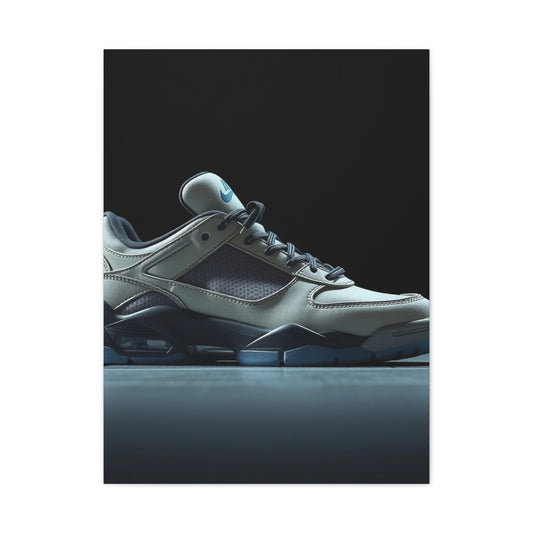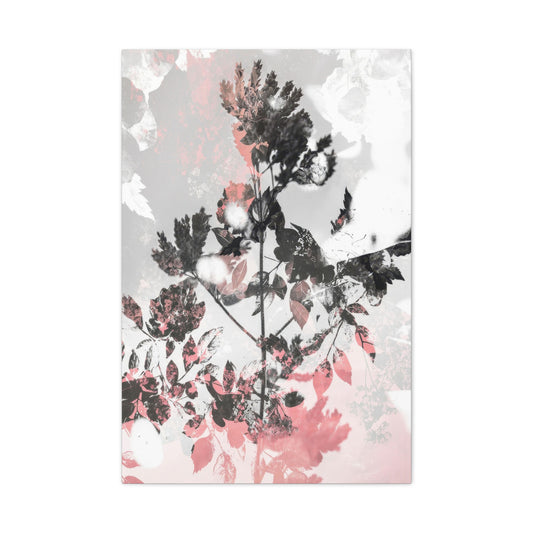Smartphone photography has evolved significantly, and with the incredible advancement in smartphone camera technology, it’s now easier than ever to capture stunning photos. These devices come equipped with high-quality lenses, intelligent software, and advanced apps that make photography accessible to everyone. However, the true art of smartphone photography goes beyond just snapping pictures; it lies in the editing process. By harnessing editing tools, you can elevate an already great photo to professional quality. In this guide, we’ll dive into the essential principles of photo editing, and show you how to bring your smartphone photography skills to new heights.
Before jumping into the details of photo editing, it’s important to recognize that capturing a good photo initially is key. An image that is well-composed and properly exposed will always yield better results than one that requires significant post-processing adjustments. While editing can certainly improve an image, relying too much on edits often diminishes its natural beauty. The most crucial aspect of a great photo is the moment captured composition, focus, and lighting are fundamental in setting up a shot. With this in mind, always take a moment to evaluate your surroundings, adjust your camera settings, and ensure the lighting is just right before hitting the shutter button.
Even though smartphone cameras have come a long way, they still have their limitations compared to digital cameras with larger sensors. One such limitation is the reduced amount of light captured by the smaller sensors in smartphones. This can result in photos with less detail, especially in low-light conditions. Therefore, it’s essential to ensure your smartphone settings are optimized before capturing the image.
Another crucial tip before you dive into editing is ensuring that your display is calibrated properly. Many smartphones come with a feature called "True Tone," which automatically adjusts the screen’s brightness and color temperature based on your environment. While this is useful in certain situations, it can interfere with the accuracy of your edits. Turn off this feature and manually adjust your screen’s brightness and color settings to a consistent level for more reliable photo editing. Maintaining color accuracy ensures that your edits reflect the true colors and details of the original photo.
Getting Started with Editing: Tools and Techniques
Once you've captured a high-quality image, the next step is to enhance it through editing. Most smartphones are equipped with built-in photo editing tools that are easy to use and can make a noticeable difference. For example, the iPhone’s native editing tools allow you to adjust key aspects of your photo, such as exposure, cropping, straightening, and even adding filters. While these built-in apps provide a good starting point for many users, they may not offer the depth of control needed for more complex edits.
When you want more flexibility and advanced options, third-party apps can open up a world of possibilities. One of the most popular apps for editing smartphone photos is VSCO. Known for its vibrant filters and user-friendly interface, VSCO allows users to make quick adjustments to their photos. It also offers advanced features like exposure, contrast, and fade adjustments, enabling you to fine-tune the look and feel of your images with precision. Whether you want to achieve a soft, moody atmosphere or add brightness to bring out vibrant colors, VSCO has a broad range of tools to suit different editing needs.
If you’re seeking even more advanced editing capabilities, Snapseed is an excellent alternative. This app provides non-destructive editing, meaning you can apply multiple layers of effects without permanently altering the original image. Snapseed’s array of tools includes detailed control over exposure, saturation, highlights, shadows, and much more. Additionally, its intuitive interface allows both beginners and more experienced users to make nuanced changes to their photos, producing professional results.
What’s remarkable about these apps is their accessibility. Both VSCO and Snapseed are designed to be intuitive enough for beginners while still providing enough depth for more seasoned photographers. They are great for refining your photos, whether you’re aiming to achieve a polished, high-end look or simply want to enhance an already great image.
Despite the versatility of these apps, one of the pitfalls many users face is the temptation to over-edit their photos. It’s easy to get carried away with filters, adjustments, and effects, but this can often result in a photo that looks unnatural. The key to effective photo editing lies in subtlety. A small tweak to exposure, contrast, or saturation can improve your image, but overdoing it can strip the image of its authenticity. Strive to maintain the natural look of your photo, enhancing its qualities without making it look artificially altered.
The Benefits of RAW Editing: More Control, Better Results
While smartphone photo editing apps offer many powerful tools, there’s one feature that can significantly improve the quality of your edits shooting in RAW format. Unlike JPEG files, which compress image data and lose some detail, RAW files retain much more information about the photo. This extra data provides you with greater flexibility when making adjustments, particularly in terms of exposure, shadows, highlights, and white balance. The ability to manipulate this detailed data gives you a deeper connection with your images, transforming how you approach the editing process and ensuring that you can achieve the perfect balance and feel in every shot.
RAW format is especially beneficial when dealing with images that have a wide dynamic range, such as landscapes or shots taken in difficult lighting conditions. For instance, if your image contains both bright highlights and deep shadows, RAW files allow you to recover details from both ends of the spectrum without losing quality. The added dynamic range of RAW files means that you can maintain much of the natural texture and depth of a scene, which might otherwise be lost in compressed formats like JPEG. Whether you’re photographing a sunset with its glowing hues or a cityscape at night with the bright lights cutting through the darkness, RAW gives you more room to perfect those elements in post-processing.
Another significant advantage of working with RAW files is the ability to fine-tune white balance with precision. In everyday photography, lighting can often shift unexpectedly a cloudy day can make colors appear cooler, or artificial lights might cast a yellowish hue over an image. With JPEGs, you’re working with a much more limited range, and any shift in temperature can result in permanent color distortions. RAW files give you more control over temperature and tint, allowing you to adjust these elements to your exact preference. The result is a more accurate and visually pleasing final image that more closely matches the scene as you intended to capture it, and not one shaped by automatic corrections applied by the camera.
RAW files also help bring out details that might not be immediately visible in JPEGs, particularly in high-contrast images. For example, an image shot under the bright midday sun might have harsh shadows and overexposed highlights, making it difficult to see detail in both areas. With RAW, you can recover shadow detail while controlling the highlights, balancing both to create a photo that retains a natural look, with a greater range of textures and subtle nuances. Similarly, when capturing details in low-light conditions, RAW can be a lifesaver by allowing you to bring out information from the darker parts of the image without introducing too much noise. This level of control is invaluable, especially for photographers who seek to push their images to their highest potential.
While not all smartphones support RAW shooting, apps like Adobe Lightroom and Snapseed make it possible to work with RAW files even on mobile devices. These apps allow users to adjust elements such as exposure, contrast, and saturation, all with the finer control that RAW provides. This means that even if you don’t have access to a high-end camera, you can still take advantage of the advanced editing possibilities that RAW offers. In fact, mobile photography has evolved so much in recent years that many people are choosing to edit their RAW images directly on their phones, streamlining their workflow and making high-quality editing more accessible than ever before.
Using RAW files can drastically improve the quality of your edits, as you have more control over how the final image looks. However, editing RAW files requires more time and skill compared to working with JPEGs. This is because RAW files are much larger and need to be processed before they can be viewed in their final form. Unlike JPEGs, which are essentially ready for use as soon as you take the photo, RAW files need to undergo a conversion process that can take a little longer. But for many photographers, the extra time spent is well worth it for the unparalleled flexibility and quality that RAW offers. Fortunately, apps like Lightroom are designed to help you make detailed adjustments in a straightforward manner, making it easier for users of all skill levels to get the most out of their RAW photos.
One of the most rewarding aspects of editing in RAW format is the learning curve it presents. As you become more familiar with adjusting things like tone curves, contrast levels, and saturation, you gain an intuitive understanding of how light and color affect your images. RAW editing also invites you to explore more advanced techniques like local adjustments, where you can apply changes to specific areas of an image without affecting the whole. The ability to make selective edits lets you enhance or de-emphasize parts of an image based on your creative vision, allowing for more artistic and nuanced compositions.
After making your desired edits, it’s important to keep your workflow organized. Always save your original file along with the edited version. This ensures you have access to the unaltered photo if you want to revisit it in the future or make further changes. With RAW files being much larger than JPEGs, storing them can take up considerable space on your device, so managing storage properly becomes essential. Organizing your photos into folders, such as separating raw and edited files, will help you stay organized as your photo collection grows. This structure will save you time and frustration when you need to find a particular image, and it will help maintain a clear and efficient workflow.
In addition to organization, it’s always a good idea to keep a backup of your photos to prevent losing precious memories in the event of data loss. Cloud storage services, external hard drives, or even physical storage devices can provide an extra layer of protection against unexpected file loss. Over time, as you build your collection of RAW images, you’ll appreciate how these backups safeguard your work. It’s often said that the value of a photo isn’t just in the moment it captures, but in the stories and memories it holds. By investing the time to properly handle and protect your photos, you ensure that these visual stories will be preserved for years to come.
Ultimately, the benefits of shooting in RAW format extend far beyond the technical improvements in your edits. It opens up a creative freedom that allows you to explore new possibilities, experiment with different styles, and fine-tune every detail of an image. It’s a tool that invites you to push the boundaries of what’s possible in photography and gives you the flexibility to express your vision more accurately.
Advanced Mobile Photo Editing: Unlocking Pro-Level Techniques
Now that you've mastered the fundamentals of smartphone photo editing, it’s time to take your skills to the next level. This guide will dive deep into advanced techniques that will help you elevate your photos, harnessing the full potential of your smartphone camera. As technology continues to evolve, modern smartphones offer a wide range of editing features that can transform an ordinary snapshot into an extraordinary work of art.
While native editing apps are great for basic adjustments, third-party applications open the door to far more creative and sophisticated editing possibilities. One such app that stands out for mobile photographers is Adobe Lightroom. Lightroom provides professional-grade features that give you complete control over how your images look. With precise tools to adjust exposure, highlights, shadows, contrast, and more, Lightroom takes your editing experience far beyond what your phone’s built-in options can provide.
A key strength of Lightroom lies in its ability to fine-tune images with incredible accuracy. Through its selective adjustment tool, you can edit specific areas of your photo without altering the rest of the image. This means you can bring attention to certain parts of your photo, such as brightening the subject’s face while keeping the background intact. This level of precision can be a game-changer when editing portraits, landscapes, or any other type of photograph that requires focus on particular elements.
Another standout feature is Lightroom's advanced white balance controls. Manually adjusting the white balance and color temperature can transform the mood of an image, giving it warmth or coolness based on your vision. Whether you're editing a sunset that could use a bit more warmth or want to introduce a cooler tone to an early morning scene, controlling color temperature adds a new layer of creativity. This tool is indispensable when you're working with photos that have inconsistent lighting, or if you want to convey a specific emotion through color.
When editing, RAW images are a game-changer. Unlike JPEGs, RAW files retain much more image data, providing extra room for editing without losing quality. This means you can adjust elements like shadows, highlights, and contrast more freely, without sacrificing sharpness. Many apps, including Lightroom, allow you to process RAW files directly on your phone, giving you the flexibility to create detailed, high-quality images with ease.
Creative Effects and Artistic Enhancements
While precision editing is essential, creativity is what truly sets a great photo apart from a good one. Creative effects can take your image from mundane to mesmerizing, transforming it into something uniquely yours. One way to add a fresh twist to your photos is by incorporating artistic filters. Apps like Glitchr and Mirrorlabs offer a variety of quirky and imaginative effects that can inject a sense of fun and originality into your photos. Glitchr, for example, allows you to apply retro effects like VHS, 3D, and 8-bit filters, creating a nostalgic or futuristic vibe that’s perfect for experimenting with different moods and aesthetics.
Mirrorlabs, on the other hand, opens up a world of possibilities with kaleidoscope and glitch art effects that can turn your photos into abstract and surreal masterpieces. Whether you're aiming for a mind-bending visual effect or want to create something abstract from a simple landscape, Mirrorlabs allows you to explore new dimensions in photography. These types of effects work especially well when you want to challenge traditional photography styles or simply have fun with your images.
Adding text or graphics to your images can also give them a personal touch, turning them into more than just photographs. Apps like Canva are perfect for this, as they make it easy to integrate text, icons, and other graphic elements into your images. Whether you're creating a social media post, designing a poster, or adding captions to a photo album, Canva’s user-friendly interface lets you layer various design elements onto your images with just a few taps.
While creative filters and overlays can give your photos an artistic edge, it’s important to keep things balanced. Overusing effects or cluttering your images with too many design elements can distract from the photo’s core message. The best approach is to choose effects that complement your image and enhance its story rather than overshadowing it. Remember, in creative editing, less is often more. Subtle effects that blend naturally into the image often have the most striking impact.
Mastering Advanced Editing Techniques
Beyond adding creative effects and playing with color, there are other advanced techniques that can further refine your photos. One of the most powerful editing tools available in modern apps is the ability to adjust the perspective of your images. When shooting buildings, architectural details, or expansive landscapes, you may notice distortions or converging lines that make your photos look less polished. This is where perspective correction tools come in handy.
Apps like Lightroom allow you to use the geometry slider to adjust the vertical and horizontal perspectives of your images. This tool is incredibly useful when you need to straighten lines or fix any lens distortion that occurs when photographing tall structures or wide open spaces. With the ability to correct perspective in post-processing, you can turn an otherwise skewed image into a well-composed and professional-looking photograph.
Another exciting aspect of modern mobile photography is the ability to experiment with depth of field. Creating a blurred background, known as the bokeh effect, can add a professional touch to portraits or macro shots. Many smartphones now come equipped with portrait modes that mimic the effect of shallow depth of field, allowing you to isolate your subject from the background. However, if you want to enhance this effect even further, apps like Lightroom and Fotor provide additional controls to adjust the blur intensity and focus area, allowing you to create more dramatic and compelling compositions.
The bokeh effect is particularly effective when you want to focus attention on a specific subject, such as a person or object, while softening the rest of the scene. This technique can be used to create portraits with a dreamy, cinematic look or even bring attention to a small detail in a larger landscape. By using advanced editing tools to fine-tune the depth of field, you can achieve a look that’s often associated with high-end professional cameras.
In addition to depth of field adjustments, advanced editing apps often include tools for noise reduction and sharpening, two factors that play a crucial role in ensuring your photos maintain their clarity and sharpness. Noise can be especially problematic in low-light conditions, where graininess or pixelation can distract from the image quality. Many third-party apps allow you to reduce noise while maintaining detail, giving your photos a cleaner, more polished appearance. Sharpening tools, on the other hand, can be used to add fine details and definition to certain parts of your photo, ensuring that every element is crisp and clear.
With the wide array of editing tools available at your fingertips, it’s easier than ever to transform your photos from good to great. Whether you're looking to make subtle adjustments or experiment with bold creative effects, the advanced features offered by apps like Lightroom, Glitchr, and Mirrorlabs give you the freedom to explore and refine your photography skills in exciting ways. By harnessing the full potential of your smartphone camera and editing tools, you can create stunning images that reflect your unique artistic vision.
Unlocking the Power of Light and Shadows for Creative Photography
When it comes to taking your photos to the next level, understanding the manipulation of light and shadow is an essential skill. Light and shadows have the ability to set the tone and emotion of an image, transforming an otherwise ordinary shot into something extraordinary. By adjusting these elements, you can significantly change the atmosphere and mood of your photograph. Whether you’re photographing a breathtaking sunset or capturing an urban cityscape at night, the relationship between light and shadow plays a central role in bringing your artistic vision to life.
For example, if you are shooting a sunset, increasing the contrast can intensify the colors and the overall drama of the scene, emphasizing the vivid hues of the sky and the subtle gradients between light and dark. Conversely, if you’re photographing in low-light environments, you can enhance the shadows to reveal hidden details, providing depth and texture to the image that would otherwise be lost. This technique allows you to breathe new life into photographs taken in less-than-ideal lighting conditions, transforming them into captivating works of art.
Contrast adjustments are not limited to sunset scenes; they can also be used to make your photos pop in any setting. High-contrast images are often more visually striking and can highlight the finer details that might otherwise be overlooked. In portrait photography, for instance, subtle contrast increases can help to define facial features and bring out the richness of skin tones. However, when applying contrast enhancements, it's essential to strike a balance. Overdoing it can result in an image that feels harsh or unnatural, so keep the adjustments subtle for a more organic effect.
Similarly, manipulating color saturation can add another layer of creativity to your work. By enhancing the saturation, you can make colors appear more vivid and intense, adding excitement to your photo. On the flip side, reducing saturation can create a more muted or even monochromatic effect, which may be perfect for evoking a timeless, vintage atmosphere. The key to using saturation creatively is moderation – too much saturation can cause colors to appear overly bright or unrealistic, while too little can make the photo feel dull.
Elevating Your Photos with Selective Color Adjustments
Selective color adjustments offer an exciting opportunity to give your photos a unique, personalized touch. Many modern photo editing apps provide features that allow you to target specific colors within an image, adjusting their hue, saturation, and luminance individually. This level of control can make a significant difference in how your image feels, as it enables you to emphasize or downplay particular colors that hold visual or emotional significance.
For instance, imagine you’re shooting a landscape where lush greenery takes center stage. By enhancing the vibrancy of the green tones in the image while leaving the rest of the colors untouched, you can draw more attention to the natural beauty of the landscape. This technique allows you to create a powerful visual focus on specific elements in the scene without affecting the overall harmony of the image. It’s particularly effective when working with nature photography, where the natural world offers a rich palette of colors that can be emphasized or subdued based on your creative vision.
Selective color adjustments can also be beneficial when you’re working with portraits. Perhaps you want to enhance the color of your subject’s eyes or hair to make them stand out more against the background. By using selective adjustments, you can make specific features pop, creating a more striking and engaging image. Additionally, these adjustments give you the flexibility to make subtle changes without compromising the overall composition of the photograph, allowing you to maintain a natural, polished look.
This method also works wonders in enhancing the mood of a photo. If you want to evoke a sense of warmth, you can selectively boost the reds, oranges, and yellows, creating a welcoming and cozy atmosphere. On the other hand, cooling down the tones with adjustments to blues and greens can generate a calm and serene vibe. Selective color editing gives you the creative freedom to manipulate the emotional impact of your photos, making them more aligned with your artistic intent.
Adding Emotional Depth with Split Toning and Virtual Lighting Effects
For those who want to add a touch of uniqueness and artistic flair to their photos, split toning is an invaluable technique that can enhance the emotional depth of an image. Split toning involves adding different color tones to the highlights and shadows of your photograph, creating a visually intriguing effect that evokes certain emotions or styles. This technique is often used to give images a vintage, cinematic, or dreamy quality, but it can be customized to suit a wide range of artistic preferences.
One way to use split toning is by introducing warm tones to the highlights, like golden yellows or oranges, while adding cooler tones such as blues or purples to the shadows. This creates a stunning contrast that draws the viewer’s eye and gives the image a sense of depth and dimension. For instance, a sunset photo might benefit from warm oranges in the highlights to enhance the sun’s glow, while the cooler blue tones in the shadows can add an air of mystery or calmness. By playing with different combinations of warm and cool tones, you can evoke different feelings, from nostalgia and warmth to tranquility and melancholy.
Another fantastic benefit of split toning is its ability to create a cohesive look across a series of images. If you’re curating a collection of photos for a personal project or social media feed, using similar split toning techniques across your images can help them feel unified and consistent. Whether you’re looking to create a retro film aesthetic or a modern, edgy vibe, split toning is a versatile tool that can help you achieve your desired visual style.
While manipulating natural lighting is an essential part of creative editing, the use of artificial lighting effects can also elevate your photos to a whole new level. Some apps, such as PicsArt, offer the ability to add virtual light sources to your images, simulating the effect of a spotlight, lens flare, or other lighting elements. These effects are particularly useful in portrait and product photography, where controlled lighting can be used to highlight specific features of the subject.
Artificial light sources can be strategically placed to draw attention to a particular area of the image. For example, a soft, diffused light placed above a subject’s face can create a flattering, professional-looking portrait, highlighting the facial features while maintaining a natural glow. Alternatively, you could use a subtle spotlight effect to emphasize a product in an e-commerce photo, making it stand out against a neutral background. By experimenting with virtual light sources, you can add layers of depth and intrigue to your photos, transforming them into more dynamic and visually engaging works of art.
Furthermore, the creative use of artificial lighting doesn’t have to be limited to portraits or product photography. You can also incorporate these lighting effects into landscapes and architectural shots. Imagine adding the illusion of a streetlamp glow to a nighttime cityscape or enhancing the glow of the moon in a dark sky. With the right lighting effects, you can add a sense of drama and visual interest that amplifies the narrative of your photo.
Capturing Memorable Moments at Special Occasions
Smartphone photography has transformed the way we capture significant moments in life. Whether you're attending a wedding, hosting a family gathering, or documenting a special milestone, your smartphone can be a powerful tool for creating beautiful and timeless photographs. In fact, with the right techniques and a bit of creativity, your phone can help you take pictures that are just as stunning as those captured by professional cameras.
For events like weddings and parties, where emotions run high and moments of joy unfold quickly, timing is essential. One of the best strategies to ensure you don’t miss any magical moments is by using the burst mode on your phone. This allows you to take multiple shots in rapid succession, increasing your chances of getting the perfect candid shot. Weddings, in particular, are filled with fleeting moments that can be hard to predict. From the first kiss to a child's laughter on the dance floor, these moments happen in a flash, and burst mode ensures that you have a collection of photos to choose from when editing later.
Once you’ve captured your shots, don’t stop there. Editing plays a significant role in bringing out the emotional depth of an image. For example, brightening shadows can add warmth to the scene, making it feel more inviting and nostalgic. If you're working with a photograph that features people, increasing the contrast can help highlight facial expressions and important details. Enhancing these elements during the editing process will ensure that your photos not only document a moment but also convey the emotions behind it. Editing your wedding or party photos can turn them from simple snapshots into cherished memories that your friends and family will treasure for years to come.
Creative Perspectives for Travel Photography
When traveling, every new place offers an opportunity to experiment with different photography styles, and your smartphone camera is an excellent companion for this. Whether you’re exploring bustling city streets or soaking in the beauty of natural landscapes, your phone allows you to capture the scene from any perspective. A wide-angle shot can help you convey the grand scale of a mountain range or an impressive landmark, while a close-up of local cuisine or architectural details will offer a unique view that many may overlook.
One of the benefits of smartphone cameras is their portability. This means you can snap pictures whenever inspiration strikes without being weighed down by bulky gear. To make the most of your smartphone’s camera, try experimenting with angles and perspectives that you might not typically consider. For instance, you can crouch down low to the ground to capture an unusual angle of a building or even frame your subject through the window of a café to add layers and context to your photo. The key to successful travel photography is embracing the diverse aspects of the location, not just the iconic spots. Pay attention to the small details that tell the true story of the place, whether it's the texture of a street sign, the colors in a local market, or the daily life of its residents.
Once you've captured your travel photos, it's time to enhance them. Smartphone editing tools can help you adjust exposure, sharpen details, and boost colors to reflect the vibrancy of the environment. Sometimes a small tweak in exposure can completely transform the image, making the colors pop and giving the photo an almost cinematic feel. Editing can bring out the true essence of your travel experience, allowing your photos to capture not just what you saw, but how you felt when you were there. By fine-tuning the colors, contrast, and details, you'll create photographs that vividly represent your adventure and evoke emotions in anyone who views them.
Mastering the Art of Smartphone Photography through Editing
Editing is a game-changer when it comes to smartphone photography. While a good photo starts with thoughtful composition, the magic often happens in the editing phase. With a few simple adjustments, you can take an ordinary image and transform it into something extraordinary. The beauty of smartphone editing tools is that they are designed to be intuitive and easy to use, so you don’t need to be a professional to achieve stunning results. However, even subtle changes can make a world of difference in the quality of your photos.
For instance, adjusting the brightness and contrast can alter the mood of a photo completely. Brightening shadows or lightening a dark image can create a sense of warmth, while darkening certain areas can add drama and mystery. Many smartphones also offer features like filters, which can help set the tone of your photos. While it’s important not to overuse filters, applying them subtly can enhance the atmosphere of your image, whether you’re looking for a vintage look, a cool tone, or a warmer feel. Additionally, tools like saturation sliders allow you to boost or tone down colors, giving you control over how vibrant or muted your final image appears.
Beyond the basics, advanced editing techniques can elevate your photography even further. For example, adjusting the sharpness or clarity can help bring out fine details, especially in close-up shots. If you’re photographing food, architecture, or intricate textures during your travels, these adjustments can highlight the beauty of the subject matter. Cropping and straightening tools can also help you perfect the composition of your photo, ensuring that the focal point is clear and the image is balanced. In some cases, you may even want to remove distracting elements in the background or use a blur effect to isolate the subject and draw attention to it.
At the end of the day, smartphone photography is all about capturing the moments that matter most to you. Whether you’re documenting a special occasion, embarking on a new adventure, or simply capturing the beauty of your everyday surroundings, your phone can help you immortalize those memories in ways that reflect your unique perspective. With a little practice and creativity, you’ll develop your own signature style, and your smartphone photos will become more than just snapshots they'll be true works of art. By mastering both the technical aspects of photography and the art of editing, you’ll ensure that every photo you take is as memorable as the moment it captures.
In conclusion, smartphone photography has revolutionized the way we document our lives, offering unparalleled convenience, creativity, and accessibility. With the right techniques and a few simple edits, you can transform your photos from ordinary to extraordinary, capturing the essence of every occasion and adventure. By honing your skills, experimenting with perspectives, and fine-tuning your images, you’ll be able to create stunning photographs that resonate with those who view them. Whether you’re celebrating with loved ones or exploring the world, your smartphone can be the perfect tool for preserving your most cherished memories.




























